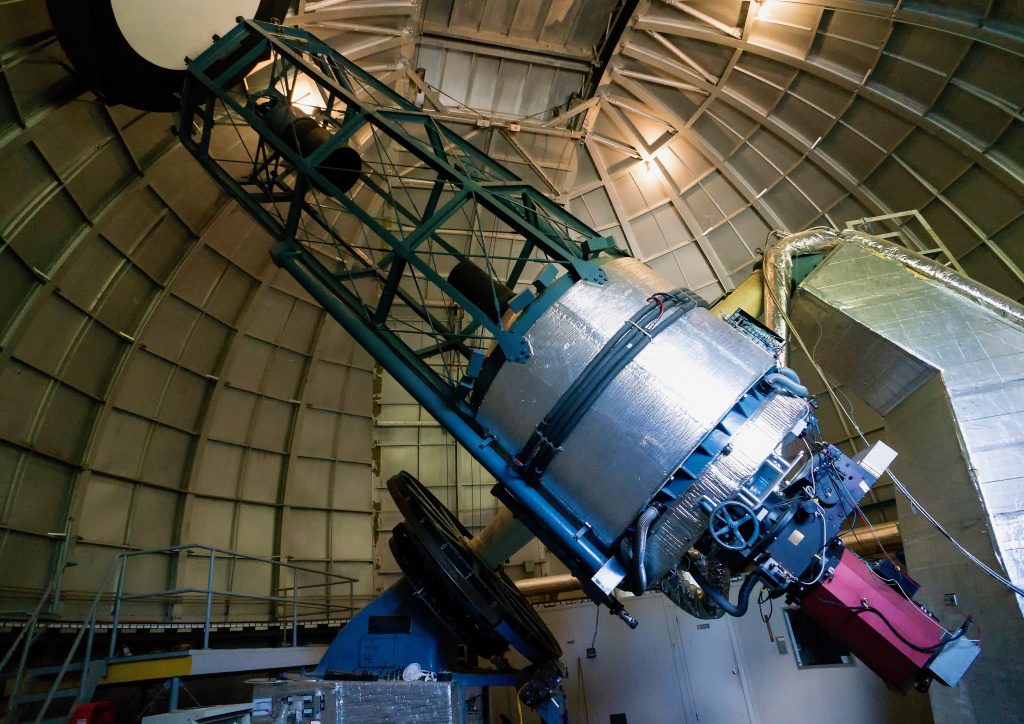Perkins Observatory
3199 Columbus Pike
Delaware, OH 43015
(740) 363-1257
Don Stevens, Director

Located just 10 miles North of Columbus on State Route 23, Perkins Observatory is owned and operated by the Ohio Wesleyan University. Since its opening in 1923, historic Perkins Observatory has been one of Ohio’s premier observatory facilities, located in central Ohio, north of Columbus, and south of Delaware.

The telescope, built by the JW Fecker company in Pittsburgh, Penn. was originally equipped with a 61-inch mirror borrowed from Harvard while its 69-inch glass was being manufactured. The big glass was installed in 1931 and made the Perkins Telescope the third largest in the world at that time.

Due to factors like light pollution and our famous Ohio weather, the Perkins Telescope was moved to Arizona, where it is now a part of the Lowell Observatory. The 69-inch primary mirror was replaced in 1965 with one of 72-inch diameter. Current (2021) research by Boston University astronomers puts the telescope to use nightly. A Galactic Plane Infrared Survey (GPIPS) by Dan Clemens was completed using the instrument and another large near-infrared project is underway, looking for exoplanets and exomoons orbiting L and T dwarf stars. Thanks to Lowell Observatory for the details. For more information and a current photo of the Perkins Telescope, see: https://www.bu.edu/pto/

A 32-inch telescope now resides at the Observatory, also built by Fecker and bears a plaque dated 1941. Perkins is primarily an active research and educational facility used by the faculty and students of the OWU Physics and Astronomy Department. Narrow-band light filtering and modern processing techniques allow collection of scientific data even under modern light-polluted skies.

A second, much smaller dome has been installed over the building entrance and houses a compact telescope that also is used in research. In July 2015 the main telescope was being upgraded to support continuing research work. Ropes attached to the telescope help immobilize the instrument whilst work is in progress.

Perkins is also distinguished for having once published an astronomy magazine called The Telescope. Started in 1932, that magazine merged in 1941 with another called The Sky to become Sky & Telescope, a magazine known and loved by many astronomers today.
Perkins Observatory serves thousands of guests each year. It is the only place in central Ohio which allows members of the general public to look through a large telescope to view the wonders of the universe.

2021: The Perkins had a 69-inch primary mirror, which was replaced in 1965 with a 72-inch diameter mirror. As for current research, Boston University is still using the telescope on a nightly basis. A Galactic Plane Infrared Polarization Survey (GPIPS) by Dan Clemens has been completed and the data are now published and public. Another NIR large project is underway, led by Prof. Phil Muirhead, to look for exoplanets and exomoons about L and T dwarf stars. Visit the following URL to get more information: https://www.bu.edu/pto/